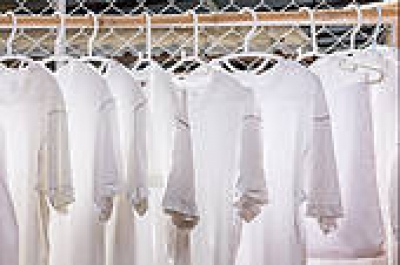seriously ...

A recent article featured in the Sunday Times by Suna Erdem explored how our fashion consumerism habits are potentially destroying the planet.
Sprinkled with eye-opening facts, the article draws attention to the little-known details of fashion production:
‘Cotton is thought of as comfortingly natural, but it is an unusually pesticide – and insecticide intensive crop.’
‘It takes more than 3,900 litres of water to produce the average T-shirt.’
‘The fashion industry is the largest polluter after the oil industry.’
Who’d have thought it? - I was certainly unaware. How unsuspecting we are when caught up in the thrill of shopping, too hypnotised by beautiful materials and opulent designs to consider the damage that has gone into creating a piece of clothing.
Unfortunately, as Erdem writes, it get’s worse. Not only is the fashion industry responsible for a large proportion of environmental pollution, but also its impact on humanity is deplorable. The industry’s drive for cheaper production has led to despicable consequences including uncountable deaths and the cruel treatment of factory and sweatshop workers:
‘Since 1995, nearly 300,000 have killed themselves to save their families from debt accrued as they struggle to afford the expensive pesticides and special seeds that are now the norm in non-organic cotton farming.’
‘Two years ago, 1,129 people died in the collapse of the Rana Plaza garment factory in Bangladesh. Beneath the rubble were not only bodies, but half-made garments for brands including Mango, Matalan and Primark.’’
Namely low-end high-street companies, brands like Matalan and Primark are hugely popular amongst shoppers as the answer to fast-fashion. Forced to meet the demands of the consumers, high-street chains are churning out over 50 collections a year. And to what cost? - The pricelessness of lives for the thrill of a bargain.
We are all guilty of it. We have all experienced the buzz that comes with finding a bargain and being able to collect the latest styles affordably. This is arguably only fuelled by the rise of social media. It has created a needless and superficial taboo of re-wearing an outfit in your recent online pictures, to the point that we become involuntary hoarders of an abundance of cheap clothes that we are unlikely to ever wear again.
So what does this mean for us shopaholics? Do we face a future of bleak misery, weighed down by guilt whenever we step into our favourite clothes stores? Must we branch out and only buy eco-friendly fashion made from recyclable fabrics? The answer you’ll be pleased to hear, is no. Thankfully there is light at the end of the tunnel.
Whilst we as buyers may be ignorant of the damaging effects of fashion on the environment, some prominent names in the fashion industry are one step ahead of us.
Marks & Spencer and Zara are the most notable high-street labels for their policies on supply-chain management, the living wage and toxic pollution.
In high-end fashion, the Green Carpet Challenge takes place every year involving the most influential names in fashion to spread awareness and highlight the ethics, sustainability and social welfare in the fashion world. Top designers including Lanvin, Paul Smith, Tom Ford and Victoria Beckham (to name a few) have previously collaborated.
Moreover, businesses such as The Kering group, which includes the designer brands Gucci, Bottega Veneta, Alexander McQueen and Balenciaga has published an environmental profit-and-loss report, which depicts the environmental damage done, but also highlights the efforts that have reduced pollution to 70% of the industry standard.
So what can we do to help?
The answer for long-term stability is to opt for quality over quantity. Support the designers both high-street and high-end who are actively trying to make the industry more sustainable, environmentally friendly and humane. Resist the temptation to buy cheap, fast-fashion every week, instead invest in more expensive, versatile pieces, which will last for years. In doing so, we can contribute to the big task of healing the planet.
Read all of Erdem’s article here: http://www.thesundaytimes.co.uk/sto/style/fashion/trends/article1612944.ece
